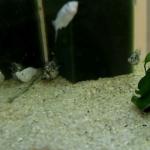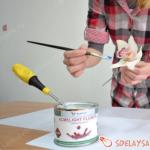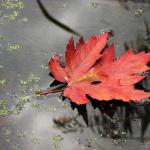Hydrangea paniculata planting and care
Since paniculata hydrangea is shade tolerant, it does not need full sun all day. A place with good illumination in the morning and evening is suitable, and during the day it is covered with a diffused shadow from tall trees or buildings. Not bad if from the north the plant closes a blank fence or hedge. But, in no case, do not place in a permanent shady or sunny place, the flower will not grow there.
Even in a small garden there will be a corner where little grows due to the acidic soil. Plant a hydrangea that loves this kind of soil. The plant is sensitive to the composition of the soil, changing the shade of the inflorescences to light colors with low acidity and coloring its buds in dark shades with high acidity.
Hydrangea paniculata can serve as an excellent background for other shrubs or be an accent in the foreground of ceremonial plantings. She gets along well next to spireas, barberries, rhododendrons and mock oranges. And the partnership of hydrangeas with pines, thujas and junipers is considered a classic, they need the same soil. Traditional herbaceous neighbors: hosta, geyhera, irises, daylilies and phlox.

The most suitable soil for hydrangea with weak or medium acidity. The soil is prepared from equal parts of peat, turf, humus and sand. If the amount of lime in the soil is exceeded, the plant will often get sick.
It is better to plant a hydrangea in the spring, but it is also possible in the fall with the obligatory shelter of the near-stem circle in the winter. At a large bush, branches are cut before planting and the roots are shortened.
Depending on the composition of the soil, the color of the inflorescences may vary: in slightly alkaline soils, the color becomes pink-red, in acidic soils - bluish-blue.

You don’t need to dig deep, 40 cm is enough for a superficial root system, but the landing pit should be at least 80 cm in diameter. At the bottom, a mound is made of well-flattened soil, consisting of equal parts of dug soil, peat, sand.
Do not plant hydrangea next to shrubs that have a similar surface root system, they may lack nutrients in the soil.

Having placed a hydrangea seedling on a tubercle, check the location of the root neck flush with the ground.

The soil in the pit is reported, constantly pouring water, then there will be no voids and the soil will stick tightly to the roots.

Planted shrubs are mulched with leaves mixed with coniferous needles, which retain moisture and subsequently provide acidic nutrition, gradually rotting. Panicled hydrangea is able to grow in one place for a long time; an adult plant is not recommended to be transplanted.
Fertilizing hydrangeas in paniculate spring and watering
The first top dressing is done in June with potash fertilizer, when the hydrangea has just woken up (a spoon in a bucket). Water is poured not under the trunk, but around the perimeter. The second top dressing coincides with the beginning of tying buds - three tablespoons of complex fertilizer. In the rainy season, the granules are simply buried in the ground under the bush. When the flowering is over, add one tablespoon of phosphorus and potassium.

Hydrangea loves moisture, it is watered weekly, abundantly (3-4 buckets per adult bush), if the soil is mulched with peat, then watering is carried out less often. It is preferable to use rainwater, too hard tap water is acidified with potassium permanganate or vinegar. It is not recommended to loosen the soil - lumpy roots grow superficially and are easily damaged.

Diseases and pests bypass panicled hydrangea. The only trouble is leaf chlorosis, which often occurs when the soil is not sufficiently acidic or when tap water containing lime is frequently watered. The disease manifests itself in the yellowing of the leaves, while the veins on them remain green. To prevent disease, add iron sulfate or ferrophyte to the soil.

It is impossible to start the disease - the branches will become fragile, the inflorescences will be crushed and spoiled. Chlorosis is first fought with the introduction of potassium nitrate (twice with a week break), then the plant is fed with iron salts or complex fertilizer.
Pruning hydrangea paniculata in spring
The shoots of a young hydrangea are pruned when planting by about a third. Sanitary pruning in the spring is carried out before the buds swell in warm weather, removing broken and frozen branches with a sharp pruner.

An adult hydrangea bush is cut to create a certain shape. On old plants, branches are removed that are directed inside the crown and do not give growth. Rejuvenating pruning returns hydrangeas to abundant and rich flowering.

In late autumn, so that the branches break less from the snow, you can remove wilted brushes by cutting them off with small parts of the stems. Many specially leave buds that look spectacular in the winter garden.
Hydrangea is easily propagated vegetatively: by cuttings or layering (pin a branch to the ground in spring and monitor humidity). Stems for cuttings are prepared during the appearance of buds. The top with the flower ovary is cut off, and the remaining green part is divided into pieces with 2-3 paired leaves.

Remove the lower leaves from the cutting.

At the top, the leaf blades are cut in half.

They put the cuttings for several hours in a solution of a root former or simply sprinkle the tips of the stems with this powder.

Then the cuttings are stuck into a wet mixture of peat and sand, at a distance of 10 cm, at a temperature of 18-20 degrees. In the first 7-10 days, the cuttings are sprayed from a spray bottle 3 times a day, the rest of the time it is enough to moisten 1-2 times a day.
After 1-1.5 months, the cuttings take root, and they are transplanted into larger pots with peat along with the soil.
When the air temperature becomes constantly positive, the bushes are planted in open ground, in holes, into which 0.8-1 kg of peat is added.
Hydrangea cuttings must be pinched 2 weeks before or 2 weeks after planting in open ground.
Before autumn frosts, seedlings are protected with non-woven material, and a frame is installed for the winter and covered with spruce branches. The following spring, paniculate hydrangea is planted in containers or immediately in place.
In the spring, the shelter is removed gradually. After the snow has melted, periodically open the plant for airing. After the snow melts, the plant is first slightly opened, and only then the shelter is completely removed.




